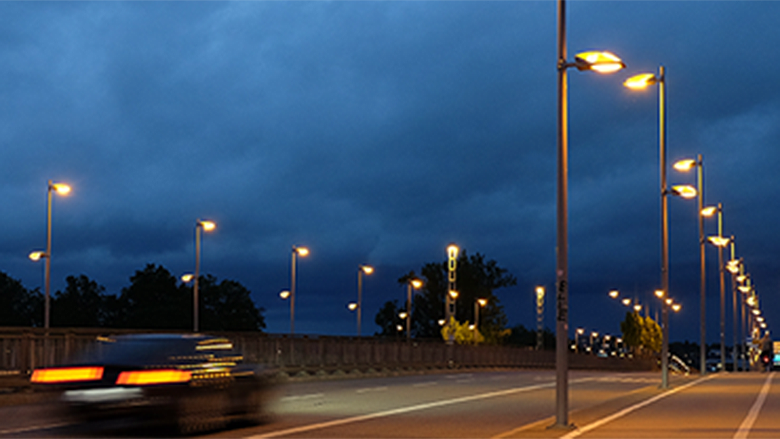Approach
The private sector has an important role to play in helping municipalities overcome these challenges to bring efficient LED bulbs to where they are needed most. The Global Infrastructure Facility (GIF) partnered with the International Finance Corporation (IFC) and the World Bank (WB) to support the Brazilian Federal Government, through Ministry of Economy (Investment Partnerships Program PPI) and CAIXA, one of Brazil's public banks. This support involved structuring and procurement of street lightning, through public-private partnership (PPP) transactions, in up to 15 Brazilian municipalities. The GIF provided funding and technical support along with its partners to assist CAIXA and other stakeholders to develop a standard approach to structuring the PPP transactions that helped build project preparation capacity and will over time contribute to increase number of transactions while reducing its costs. The GIF’s engagement supports the World Bank Group’s wider efforts to promote energy efficiency. The engagement also provides value by helping CAIXA develop the necessary institutional capacity to apply this standardized PPP approach to future projects in other municipalities.
In addition to the standardized PPP model and capacity building features, the Program has also contributed to knowledge sharing by capturing lessons learned throughout the structuring process that are now publicly disseminated through a Guide on PPP project structuring in street lighting contributing to better projects and the PPP instrument as a whole.
Results
Five municipalities—Aracaju (Sergipe State), Belém (Pará State), Feira de Santana (Bahia State), Franco da Rocha (Sao Paulo State) and Sapucaia do Sul (Rio Grande do Sul State)—were already auctioned at B3, the Brazilian Stock Exchange, in separate competitive and open procurement processes where the projects were awarded to the private companies. Following successful auctions, five projects had reached commercial close, contract signing between the private company, awarded with the concession in the competitive bidding process, and the public authority, by March 2021. These five municipalities are receiving about USD63 million in private investment to replace 224.000 streetlights with LED technology, what will benefit 3.1 million people.
The program will contribute positively to climate change and consequently to Brazil’s NDCs—committed to achieving 10% efficiency gains in the electricity sector by 2030. This Program will help reduce emissions by about 21,500 tons of CO2 per year, as the LED technology for public street lighting has proven to deliver energy savings of up to 80 percent when combined with smart management and control systems. Moreover, replacing existing obsolete infrastructure by LEDs can not only improve the level of service and increase coverage, but also generate notable economic savings to municipalities in a fiscal constrain scenario, since public street lighting represents 4% of total energy consumption in country.
In addition to energy and economic savings, the projects also have a wide range of other socio-economic benefits, that include an important gender component, such as (i) improving lighting quality, the access to public services and the labor market; (ii) lowering opportunity crime (up to 36% reduction) and gender-based violence; (iii) enhancing communities’ perception of security, in which women are most vulnerable; and (iv) a growth of local economic activity due to increased safety. While the adoption of “smart” and real-time control systems will allow greater flexibility in terms of delivering lighting options that are focused on the daily needs of citizens.
Bank Group Contribution
The World Bank-hosted Financial Intermediary Fund (FIF), the GIF, provided USD4 million in funding and technical support, in partnership with the IFC and World Bank, to assist Brazilian municipalities to transition to energy-efficient business models.
The GIF is a multi-donor FIF funded by: Australia, Canada, China, Denmark, Germany, Japan, Singapore and the World Bank.
Partners
GIF, through a comprehensive partnership with IFC, the World Bank, the Brazilian Federal Government, CAIXA (Brazil Development Bank), the Ministry of Economy, and the Ministry of Regional Development, has provided funding and technical support to develop a standard approach to structuring the PPP transactions and develop project preparation capacity.
Looking Ahead
These pilot transactions will provide a model for a future replicable program of investments, expected to reduce emissions up to an annual total of 565,556 CO2 tons. Currently, five municipalities have begun to implement the LED technology and two more are expecting to do it in 2022, while other five municipalities associated with the second round are already in the approval process to begin procurement. The second round of the Program began in early 2022 in the following selected municipalities: Foz do Iguaçu and Ponta Grossa (Paraná State), Olinda (Pernambuco State), Ribeirão Preto (Sao Paulo State), and Timon (Maranhão State).
For the whole pilot Program, approximately USD251 million is expected as private capital mobilization. The pilot transactions’ success, together with the promoted knowledge sharing and the institutional support provided secure the long-term legacy of the initiative and ensure CAIXA continues to prepare street lighting transactions in other Brazilian municipalities after the WBG and GIF structuring work is completed, as well as the potential creation of similar structures for other sectors, mainly for social infrastructure.
Additionally, the structure can be replicated in other countries through their own national or regional banks to develop public street lighting initiatives of their own benefiting from the recent sector technological developmenting
Learn More
https://www.globalinfrafacility.org/project/6782495b-1c59-e811-811f-c4346bdca201
